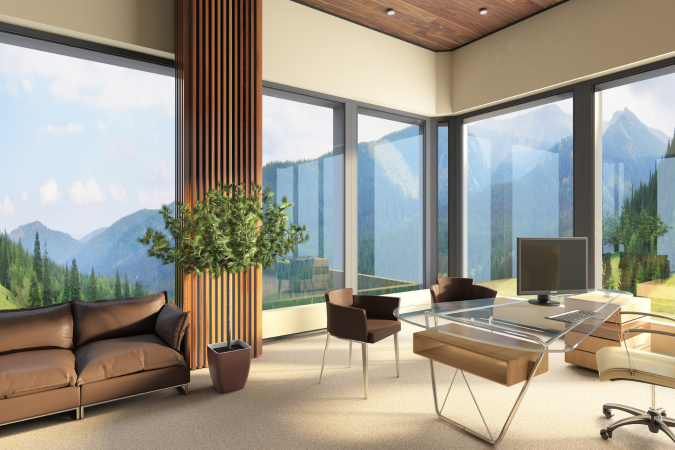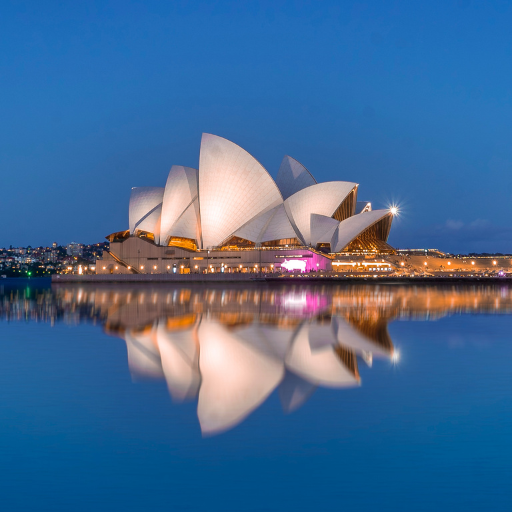.png)
From Bricks to Feelings: AEC's Emotional Craft
Spaces surround us, whispering stories and evoking emotions at every turn. The spaces we occupy, whether they're our cozy bedroom, the bustling streets of our city, or the serene ambiance of a public park, weave an intricate tapestry of emotions within us. Ever paused to marvel at the tranquility that embraces you as you step into a beautifully designed atrium, or the unsettling tightness that grips you when you're in a dimly lit, claustrophobic alley? This isn't a random occurrence. These reactions are the product of centuries of architectural evolution and human understanding.
Architecture, far from being just about bricks, mortar, and aesthetics, is an art that molds human experiences. It's a silent yet powerful dialogue between spaces and human emotions. Architects and designers play the role of translators, translating human needs and emotions into physical form, and crafting spaces that not only serve functional purposes but also connect deeply with our emotional core. As we embark on this exploration of design and emotion, we'll dive deep into the symbiotic relationship between architectural choices and the emotional responses they elicit, uncovering the myriad ways in which architecture influences our mood and overall well-being.
Imagine walking into a sunlit room, with natural light gracefully flooding the space, casting a gentle glow on every surface. As your eyes adjust, a wave of calm washes over you, muscles relaxing, mind at peace. Now contrast this with the feelings that emerge when you step into a dark, cluttered room. There's an immediate tension, a tightening of the shoulders, and an undeniable cloud of discomfort hovering in your thoughts. These contrasting experiences in similar functional spaces underscore the profound impact architecture has on our emotional states.

The Interplay of Lighting and Mood in Architectural Design
Light, both in its intensity and quality, shapes our moods in subtle yet profound ways. Sunlight, for instance, is more than just a source of illumination. Studies consistently reveal that exposure to natural sunlight stimulates the brain to release serotonin, the 'feel-good' hormone. This link between sunlight and mood forms the basis for many architectural designs. As architects strive to optimize spaces for natural light, design elements such as expansive windows, strategically positioned skylights, and mirrors become pivotal. These elements, while enhancing the room's aesthetic allure, primarily serve to orchestrate our emotional experience within the space.
However, the absence of appropriate lighting can cast a shadow over our emotions. In dimly lit areas, where the quality of light seems cold or unnatural, feelings of melancholy or desolation can prevail. Hence, architects bear the dual responsibility of ensuring a space is neither too stark nor too shadowy but is bathed in a comforting luminescence that harmonizes with its surroundings.
Color Choices: Painting the Emotional Tone of Spaces
Colors are a powerful, silent language spoken by spaces. When we step into a room painted with warm hues like crimson, amber, or tangerine, our brain interprets these as comforting and invigorating. These colors evoke sensations of warmth, sociability, and zest. Conversely, cooler tones like cerulean or mint tend to bring forth a sense of tranquility and spaciousness.
Modern architectural trends lean heavily towards minimalism, and with it comes a predilection for neutral palettes. Stark whites, muted grays, and deep blacks are not merely stylistic choices; they sculpt an environment that offers visual respite and clarity. Through these palettes, architects intend to evoke feelings of spaciousness, purity, and simplicity.
Space and Freedom: Crafting Liberty in Urban Designs
Every inch of space communicates. High ceilings often act as silent motivators, fostering creativity and invoking a sense of liberty. In contrast, lower ceilings tend to cocoon occupants, offering a snug, personal atmosphere. Open spaces, while providing a sense of freedom, can sometimes be overwhelming, leaving individuals feeling exposed or lost. On the other end of the spectrum, tightly enclosed spaces can offer a protective embrace, but might also stir feelings of confinement.
In urban scenarios, where space is a luxury and the populace is burgeoning, architects juggle the challenge of creating 'roomy' designs within compact confines. Cleverly designed open floor plans, versatile furniture that doubles up in functionality, and visual tricks that play on perceptions of space, all ensure that even the tiniest apartment can feel like a sanctuary.
Nature and Well-being: Embracing Biophilic Design in the AEC Industry
The allure of nature isn't just poetic; it's primal. It's why the rustling of leaves calms us, or why a cascading waterfall can mesmerize us for hours. Architects, tapping into this innate human-nature bond, have begun weaving in elements of the wild into urban dwellings. Subtle incorporations like indoor greenery, wooden fixtures, water bodies, and even auditory elements like the gentle chirping of birds or the murmur of water contribute to an atmosphere of serene vitality.
In recent times, the concept of biophilic design has risen to prominence. This design philosophy extends beyond mere inclusion of plants. It emphasizes a holistic approach where natural light, organic materials, and spatial configurations work in tandem to recreate the essence of nature indoors. Walking into such spaces often feels like a gentle embrace by nature, reaffirming the age-old adage that we are, in fact, a part of the world we inhabit, and not apart from it.

US Urban Design: Balancing Space and Emotion in Major Cities
In many major U.S. cities like New York and San Francisco, escalating real estate prices have resulted in smaller living quarters. This reduction in personal space poses a challenge: ensuring that these compact environments remain conducive to emotional well-being. Without thoughtful design, tiny apartments can evoke feelings of confinement or restlessness.
However, there's a silver lining. Urban planners are emphasizing the importance of public spaces, such as New York's Central Park or Chicago's Millennium Park. These communal areas offer city dwellers a haven from the hustle, a touch of nature, and a sense of spaciousness amidst the surrounding high-rises.
Architectural solutions are evolving in response to the spatial challenge. Designers prioritize multifunctional rooms adaptable to various needs and ensure even compact spaces receive ample light. Additionally, communal spaces within residential areas are becoming popular, reflecting the growing need for genuine human interaction in the digital age. In essence, while urban U.S. cities confront space constraints, there's a concerted effort to maintain emotional resonance within their architectural designs.
Architectural Marvels: An Emotional Odyssey
Across the vast expanse of our world, architectural wonders rise, each echoing stories of time, culture, and human endeavor. These structures aren't merely bricks and mortar; they are evocative canvases that resonate with emotions, taking visitors on a profound emotional journey.

The Taj Mahal in India stands as an emblem of eternal love. Bathed in white marble and set against a serene backdrop, it effortlessly evokes feelings of romance, melancholy, and deep admiration. It's a testament to how architecture can capture and convey the profound depths of human emotion.

In the heart of Barcelona, the spirals and columns of the Sagrada Família rise. Antoni Gaudí's masterpiece dances with light and shadow, creating an ever-evolving ambiance. This basilica, in its play of gothic and Art Nouveau forms, becomes an emotional chameleon, invoking feelings ranging from spiritual elevation to awe-inspired wonder.

The iconic sails of the Sydney Opera House, set against the vast blue of the harbor, stand as a beacon of creativity and ambition. It's not just an architectural marvel but an embodiment of human ingenuity. The very sight of it inspires a burst of exhilaration and a sense of boundless possibilities.

Hidden amidst the rugged mountains, Petra in Jordan unravels tales of ancient civilizations. Its rose-red cliffs and majestic carvings exude mystery and reverence. Wandering through its alleys, one can't help but feel the weight of time, a nostalgic yearning, and a deep connection to the epochs gone by.
These global architectural marvels, each unique in form and purpose, unite in their ability to touch the human soul. They remind us that architecture is more than just creating shelters; it's about crafting experiences, evoking emotions, and connecting deeply with the human psyche.
Conclusion
In a world continuously shaped and reshaped by human creativity, architecture stands as a powerful testament to our innate desire for emotional connection. Whether it's the tranquility we feel in a well-lit room, the comfort from a chosen color palette, or the awe as we stand before global architectural wonders, the spaces we occupy profoundly influence our emotional well-being. Architects, in their artistry and vision, don't merely design structures. They design experiences, emotional landscapes that resonate deep within us. As we navigate our lives, let us not forget the profound ways our surroundings touch our soul, teaching us, comforting us, and reminding us of the vast spectrum of human emotion. The interplay between architecture and emotion underscores a universal truth: the spaces we inhabit are, in essence, reflections of our shared human journey.
Turn Estimations into Certainties – With BidLight by your side, why guess when you can know? Click to explore 👉 https://app.bidlight.com